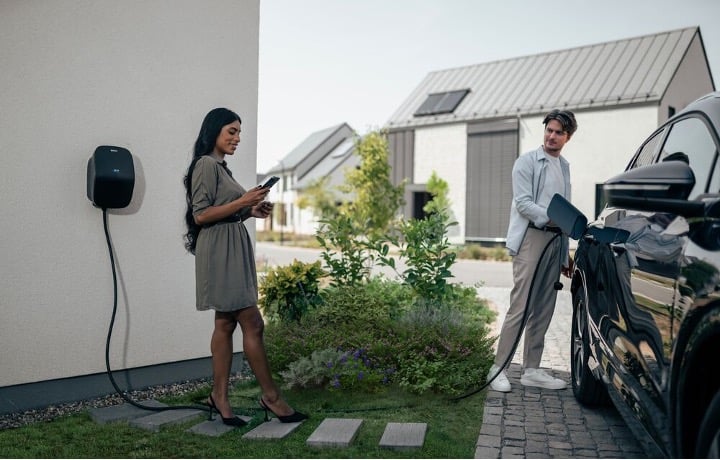
There are several ways EV drivers can optimize a homegrown solar system to ensure their EV recharging needs are met. Optimizing a solar EV charging setup ensures that solar panels produce and store enough renewable electricity to cover household and EV energy consumption even on cloudy days and overnight.
The seven most important factors to consider when optimizing your solar EV charging system are:
- The capacity of your solar panels – can they produce enough electricity to meet your needs?
- The angle and orientation of your panels – are they positioned to absorb maximum sunlight?
- The adaptability of your panels – will you install sun trackers to help maximize their exposure?
- Smart home charging – can you enhance solar efficiency with a solar panel management system?
- Battery storage – how will you capture surplus solar energy to ensure no electricity is wasted?
- Solar panel maintenance – how do you keep your panels in tip-top working condition?
- Return on investment – how will you make the cost of optimization work for your budget?
Table of contents
- Assessing your solar system’s suitability for EV charging
- Three ways to optimize a standard solar setup for EV charging
- Optimizing solar EV systems with smart charging integration
- Exploring energy storage solutions for optimal charging
- Final financial considerations and ROI expectations with optimized solar EV charging setups
The vast majority of EV recharging is carried out at home, utilizing the convenience of home charging ports and free parking. Today, many EV drivers are reconsidering the source of the electricity they use to charge their cars, turning from grid-linked power to the free, sustainable electricity generated by home solar systems. In places like the USA, for example, EV drivers are around 4.1 times more likely to have rooftop solar panels installed compared to the general population, with 1 in 10 also opting to optimize their solar EV charging system with battery storage.
There’s a good reason why so many EV drivers are turning to solar charging. Home solar can prove a worthwhile long-term investment, as the electricity they produce can significantly reduce annual utility bills as well as further lower your carbon footprint. Nevertheless, there exist understandable concerns over the viability of solar EV charging in parts of the world that experience frequent poor weather, including low light conditions such as cloud cover, rain, and storms. Indeed, adverse weather can reduce the electrical output of solar panels by as much as 90%.
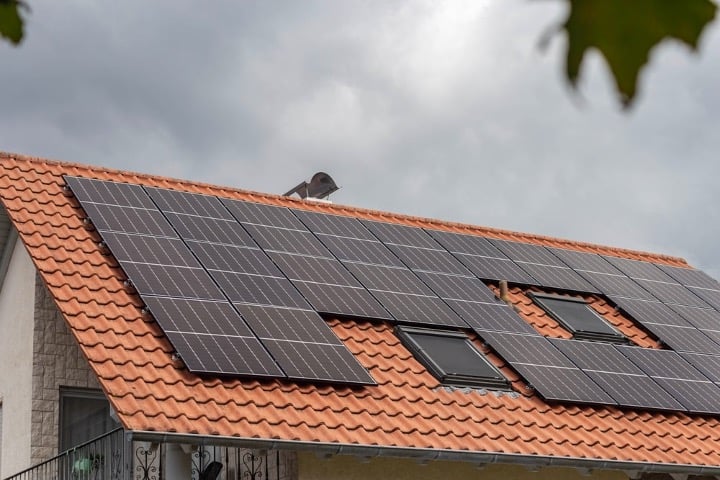
Optimizing your solar EV charging setup is essential in order to create a system that meets your EV recharging needs throughout the year, regardless of weather conditions or charging preferences. Moreover, since most rooftop solar panels will also be used to power household appliances, doing so helps to ensure the needs of the home as a whole are met. Whilst this is the case, as experts in EV charging, our article will focus exclusively on the optimization of solar systems for this purpose.
EV drivers can take a number of steps to ensure the optimal performance of their solar EV charging system, all of which will be explored in this article.
Assessing your solar system’s suitability for EV charging
The first step to optimizing your solar setup for EV charging is to determine how suitable your current panels are to accommodate your recharging needs. Of course, if you’ve yet to install solar at home, you may have a little more flexibility with regards to designing an optimal solar installation from scratch.
The most important metric for solar panel assessment is the potential output, or capacity, of your panels – measured in kWh of renewable electricity generated per day. In addition to powering household appliances, daily EV recharging requires a certain amount of solar electricity, depending on factors such as your average daily battery usage and the battery capacity of your electric car.
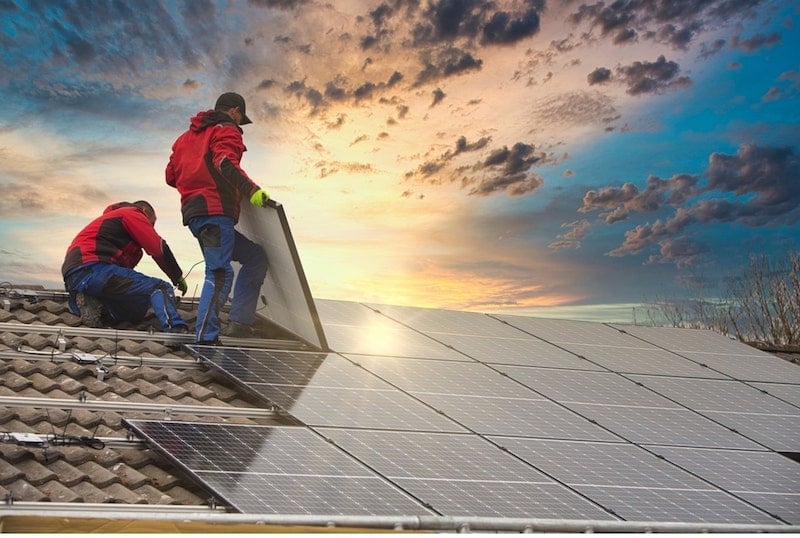
As standard, a solar EV charging system must be able to produce at minimum the amount of electricity your EV uses on average each day, to replenish the EV battery when you plug your car in to charge.
An optimized system, however, should be able to produce an excess of electricity, so as to cover recharging after longer-than-average journeys, as well as deficits in power outages caused by adverse weather conditions and, over time, a slight decrease in solar panel efficiency. In short, an optimized system should be able to cover all of your EV-charging needs, all the time.
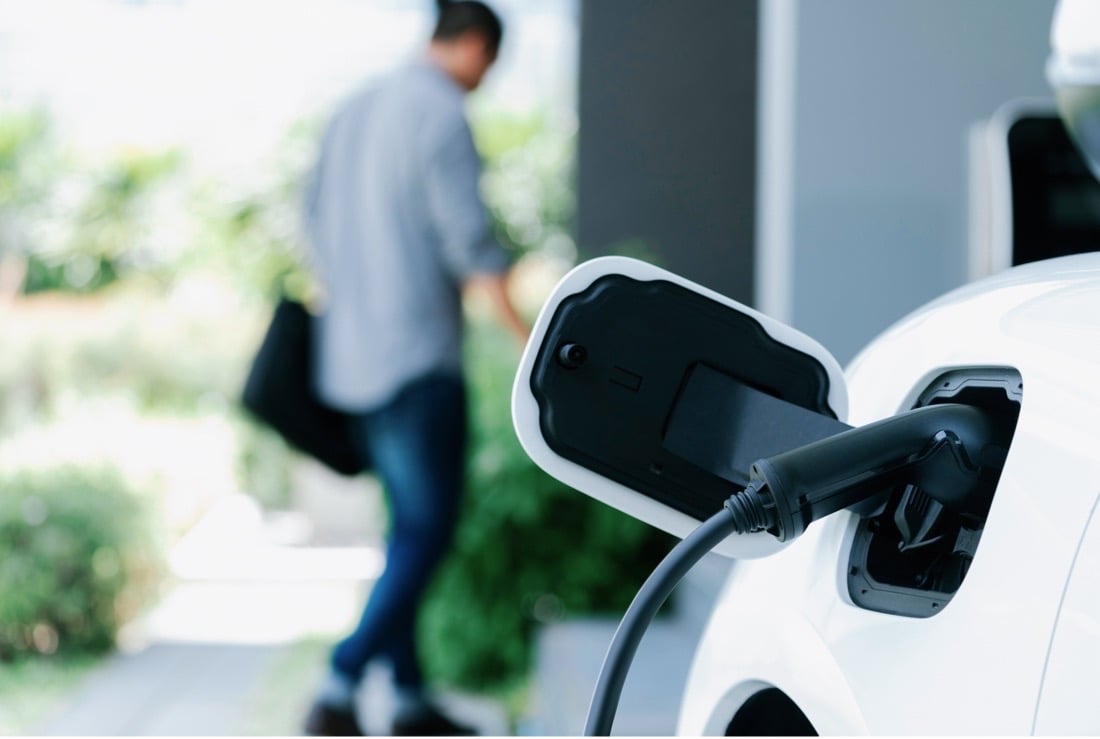
To create the optimal solar EV charging system, you’ll first need to calculate how many solar panels you need in order to produce the electricity you require, as well as where best to place these panels.
Solar Panel Output Assessment
To determine the perfect number and wattage of solar panels for your optimized solar EV charging system, you’ll need to know the following:
- Your average daily mileage
- Your EV’s average energy consumption per mile/kilometer
- Your EV’s battery capacity
- The average daily number of peak sunlight hours in your area
We’ve produced a handy guide on how to use this information to calculate solar power performance and EV charging speeds when designing yourself a home solar system.
Three ways to optimize a standard solar setup for EV charging
Once you’ve run some calculations on the suitability of your existing solar system for EV charging, you should be able to tell whether there is a mismatch between your current average output and your EV’s daily recharge requirements. Next, you can concentrate on optimizing the system to increase its performance and meet those needs.
1) Panel placement and orientation
Solar panels should be oriented toward the sun for peak performance. If you live in the northern hemisphere, this means installing solar panels on a south-facing roof, i.e., toward the equator. If you live in the southern hemisphere, on the other hand, then panels should be north-facing. In situations where the design of your home makes it impossible to position panels in this way, then east-west facing solar systems can also be adopted, though bear in mind that such setups may lose up to 20% electricity production annually, compared to more ideal arrangements.
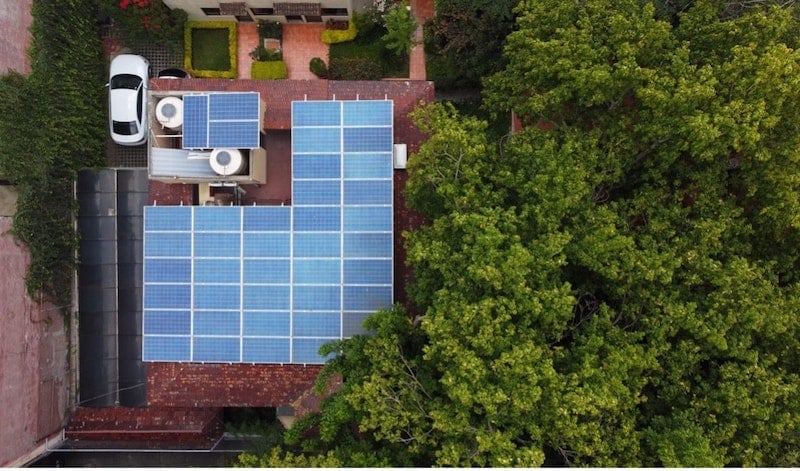
The angle at which you install your solar panels is also important. Because the sun traverses the sky at different heights throughout the day and year (sitting almost directly overhead at midday in midsummer, and close to the horizon at dusk in winter), your solar panels should be tilted to catch the maximum amount of available sunlight.
In most locations, the ideal tilt sits somewhere between 15 and 45 degrees. This corresponds roughly to your latitude. If you live at a latitude of 25 degrees from the equator – either north or south – then your optimal solar panel tilt is likely to be 25 degrees. The further you are from the equator, the greater your optimal angle, and vice versa.
2) Equipping your solar panels with sun trackers
You may also wish to consider incorporating automated technologies that tilt and swivel your solar panels according to the time of day and month of year. Though an added cost, “sun trackers” – also known as solar trackers or solar racks and mounts – change the angle and orientation of your panels so as to follow the sun in its course across the sky, thus maximizing their potential energy output.
3) Upgrading or expanding your solar array
Yet another way to improve the performance of your solar setup for EV charging purposes is simply to consider adding additional panels, and/or replacing existing panels with newer, higher-efficiency models. Some of the newest types of solar panels currently being tested – so-called perovskite-silicon “tandem cell” solar panels – have pushed solar efficiency beyond the previously-thought-unsurpassable benchmark of 30%.

Optimizing solar EV systems with smart charging integration
Solar EV systems can be further optimized with the introduction of smart-charging technology. Smart charging is an umbrella term for a variety of processes that seek to make the electricity generated by your panels work best for you. Let’s take a look at two of the most useful smart charging technologies for improving the efficiency of your solar EV charger.
1) Timed charging and scheduling
The best time to charge your EV using solar panels is during peak sunlight hours when your panels are producing close to their maximum potential energy output. Smart charging would allow you to choose, manually or automatically, when you want your EV home charger to draw power from your solar panels to recharge your car: utilizing peak sun hours to your benefit. Similarly, you could use smart timed charging to draw solar electricity from a solar battery storage unit for charging at other, more convenient times, such as overnight.

2) Smart appliance optimization
There are two main types of smart-charging optimization systems for you to consider outfitting your solar panels with HEMS and single-appliance optimization.
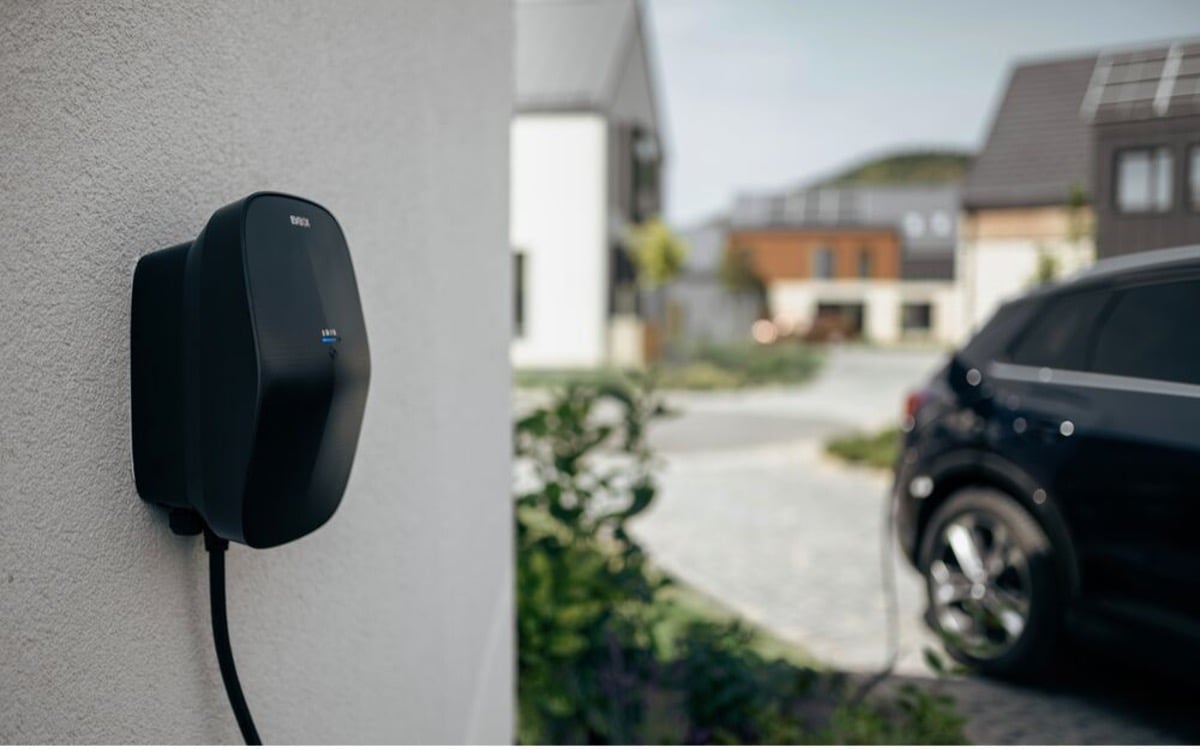
2.1) Home energy management systems
Home energy management system integrations, or HEMS, monitor the energy usage of all of your household appliances – including your EV charging station – at the same time as monitoring the output of your panels. Using smart algorithms, a HEMS integration would then carefully control the delivery of renewable electricity to your appliances in order to maximize its potential value, reduce wastage, and reduce your monthly utility bill to its minimum potential. HEMS, however, is most useful to households with a large number of energy-intensive appliances.
2.2) Single appliance optimization
You can also choose to optimize the productivity of your solar EV charging system with a single-appliance optimizer, otherwise known as a dedicated smart charging feature. A single-appliance optimizer would be connected directly to your home EV charging station and would deal exclusively with the relationship between it and your solar panels. A single-appliance optimized system seeks to deliver solar power as it’s being produced directly to your EV charging station so as to recharge your car using solely solar.
Exploring energy storage solutions for optimal charging
Though midday may well be the optimal time to charge your EV with electricity directly from your solar panels, few of us keep our cars parked at home during daylight hours. For many, especially those who commute to and from a 9-5, there is a much greater need for an energy storage solution that can facilitate solar EV charging at other times of the day and night.
Battery integrations greatly optimize solar EV charging setups by storing all of the surplus energy generated by panels but not used by household appliances as it’s produced. This energy can then be redirected to your EV charging station as and when you need it: making up for energy deficits on cloudy days, for example, or enabling overnight charging during hours when solar panels are naturally inactive.
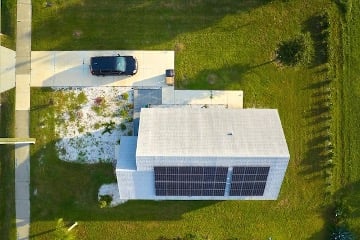
Recommended battery management for optimized solar EV charging
To ensure the optimal performance of a solar-plus-storage system, it’s important to correctly size the batteries you buy according to your household and EV’s energy consumption. We recommend also pairing battery storage with a smart charging system to facilitate dynamic load balancing.
Dynamic load balancing ensures your fuse doesn't blow if the demand for power is higher than the maximum available power. It constantly monitors changes in energy use on your circuit and automatically allocates the available capacity to different appliances.
For example, if an oven, a dishwasher, and a car are connected at the same time, dynamic load balancing may decide to stop or slow the charging process of the car to free up capacity for the other appliances.
Paired with battery storage, dynamic load balancing can also theoretically keep your EV charging at optimal voltage and wattage for a speedy recharge, by drawing stored electricity from the batteries to compensate for shortfalls during times of peak household consumption.
How to maintain a solar EV charging system for optimal performance
One of the final means of optimizing your solar setup for EV charging is to keep on top of solar panel maintenance. The build-up of dirt and debris on solar panels can greatly reduce their capacity to convert sunlight into usable electricity. As such, regular solar panel cleaning helps to keep solar panels operating at maximum efficiency.
Similarly, annual professional inspections and solar panel servicing are recommended. Regular inspections will identify any issues with your solar panels’ functionality, as well as any damage caused by adverse weather (such as hail) before these issues get out of hand. This not only keeps repair and maintenance costs to a minimum but keeps your panels producing electricity for your EV at their full potential.

Final financial considerations and ROI expectations with optimized solar EV charging setups
Lastly, we feel it beneficial to mention the potential costs associated with optimizing your solar panel system, so that you can confidently design a solar EV charging setup within your financial means.
Average solar panel costs
The average price for high-efficiency monocrystalline solar panels in today’s consumer market is between $1 and $1.50 USD per watt. Depending on the wattage you require to meet your EV charging needs, therefore, solar panel array costs will vary.
A 4,800W solar array, for example – capable of recharging the average daily battery consumption of a popular E-SUV, the Hyundai IONIQ 5 Long-Range AWD – may cost between $4,800 and $7,200. Accommodating the additional energy consumption of your home appliances would of course require additional panels. Some estimates place the average price of a household solar array at around $16,000.

Average EV home charging station costs
A home charging station can cost you anywhere from $730 to $1,740. This puts the average price at around $1,200 USD.
Average HEMS integration costs
HEMS can cost anywhere between $400 and $2,000. Averaging $1,200. The price for a single-appliance management system would likely, therefore, be far less expensive.
Average battery storage for solar EV charging costs
The average cost of a quality battery storage system suitable for optimizing your solar EV charging setup is around $12,000.
Average total cost of an optimized solar EV charging setup
Using the average costs listed above, it’s possible to put together a rough budget as a guideline for those interested in installing a 100% renewable, reliable, and optimized solar EV charging system capable of meeting your car and home’s energy needs.
Combing the average cost of panels, $6,000, to that of a charging station, $1,200, HEMS, $1,200, and battery storage, $12,000, we estimate an optimized solar setup for EV charging may require an initial investment of around $20,400.
Note: These costs can differ depending on your needs and are based on the average global costs of high-quality materials. You can adjust the quality of the materials you buy to suit your budget. The lower the overall cost, the sooner you may see a potential return on your investment.

Calculate the potential return on investment from increased solar efficiency
An average home EV charging session using electricity from the grid would cost you around $10 in the US and €19 in the EU. This equates to around $0.15 per kWh and €0.28 per kWh respectively. Using these figures, we can determine how much you might save on average, per year, using the 100% free electricity generated by your solar panels.
Let’s say you recharged your EV by 8kWh every day, to recover the charge used driving the global average daily mileage of 40km. In this scenario, you would use 2,920kWh of electricity recharging your EV each year. If we assume that on a number of days throughout the year you drove farther, and thus required a bigger recharge, we might increase this example usage to 4,000kWh.
Using grid electricity to charge your EV by 4,000kWh annually would cost you $600 in the US and €1,120 in the EU. Thus, this is roughly how much you would save on your utility bills (from solar EV charging alone) per year.
Using the above calculations in conjunction with the estimated cost of an optimized solar EV charging system ($20,400 or €19,150), it would take you roughly 34 years to see an ROI in the US, from solar EV charging alone, or 17 years in the EU.
Add to this additional savings from solar electricity used to power your household appliances, and these projected ROI times would be substantially decreased.
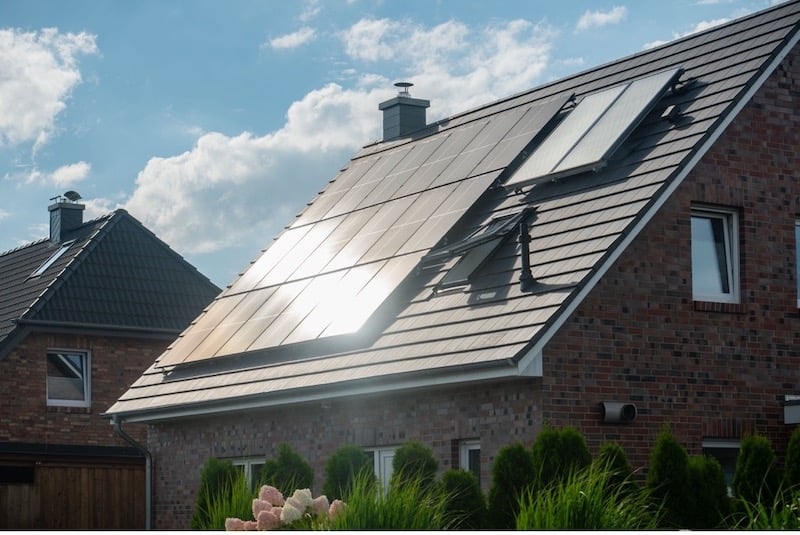
Reducing the cost of your optimized solar system with incentives and tax rebates
If the costs discussed above seem prohibitive, there are potential government and private incentives and rebates available around the world, depending on your location. These can seriously help to reduce the upfront costs of solar installations, and may even earn you money, or tax rebates, for the solar electricity you generate.
Net-metering, for example, is an incentive that pays homeowners for the renewable energy they don’t use, and which is fed back into the grid to be used by others. In some countries, governments aiming to meet climate targets are incentivizing homeowners to install solar with grants, bursaries, and other tax incentives.
By reducing the initial cost of your optimized solar charging system, and earning money on the electricity your panels produce, you might be able to predict an ROI timeline which makes the investment a great deal more manageable.
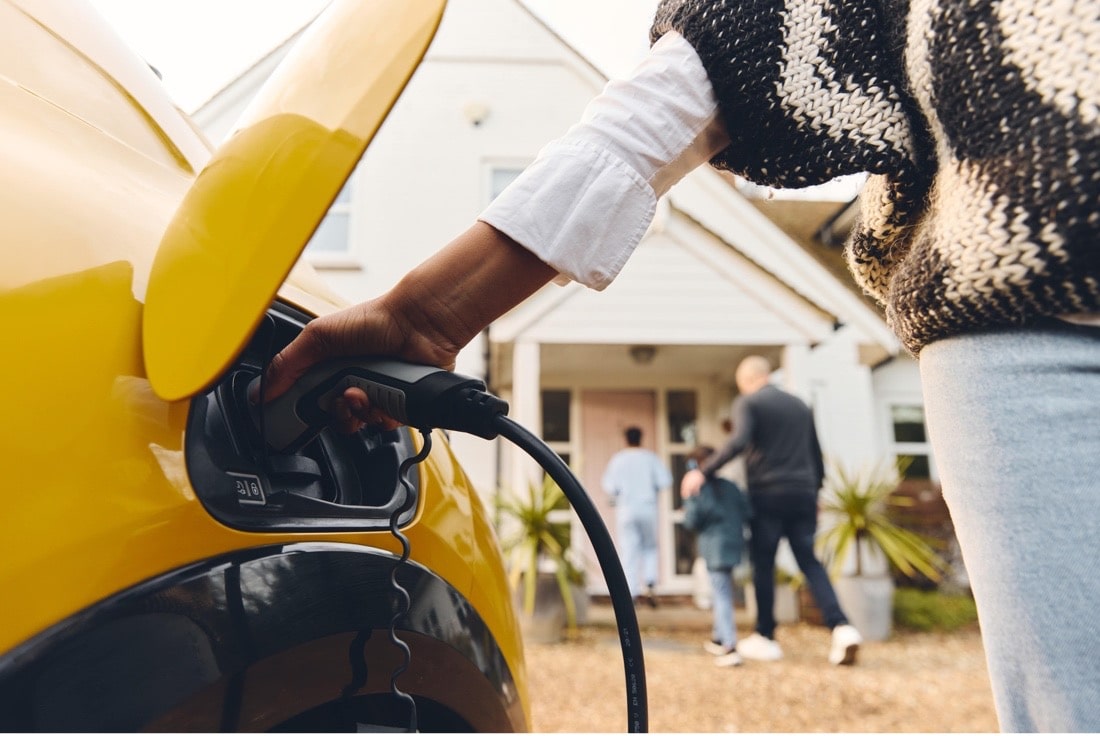
Conclusion
Solar panel charging for electric vehicles is becoming increasingly popular, especially as panel technology improves and comes down in price. Homegrown solar energy is 100% green and free – a carbon-neutral source of electricity with which to recharge your EV. However, in order to ensure that a solar EV charging system meets 100% of your recharging needs, 100% of the time, it’s important to optimize your system to suit your specific circumstances.
Optimization of solar EV charging setups can include such simple considerations as: How many panels do you need to charge your EV? What direction are your panels facing in? And are your panels kept clean and in good working order?
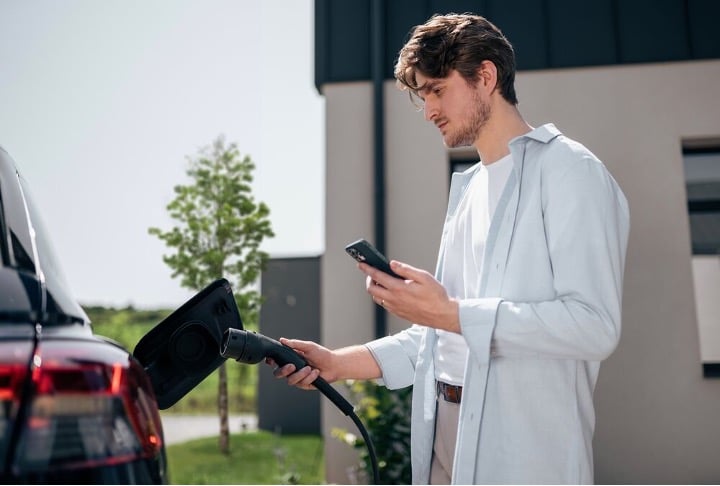
Other, more cost-intensive measures for optimizing your solar array include the integration of battery storage units and smart home energy management systems, as well as automated sun trackers to keep your panels facing the sun directly throughout the day.
Optimizing a solar EV charging setup is a reliable way of ensuring the system produces and stores enough electricity to meet the needs of your home EV charging station as well as your household appliances, but it can be pricey. One way to mitigate this is to research the availability of incentives and tax rebates in your area, whilst calculating the savings 100% free electricity will earn you.
Related articles

Smart Charging for Solar EV Systems: What is possible today?
There are a variety of smart solutions available, capable of optimizing your solar EV charging system in different...

Can solar EV charging save you money?
Charging your EV using household solar panels can indeed save you money on your utility bills. How much money solar EV...

How to optimize your solar set-up for charging electric cars at home
There are several ways EV drivers can optimize a homegrown solar system to ensure their EV recharging needs are met....